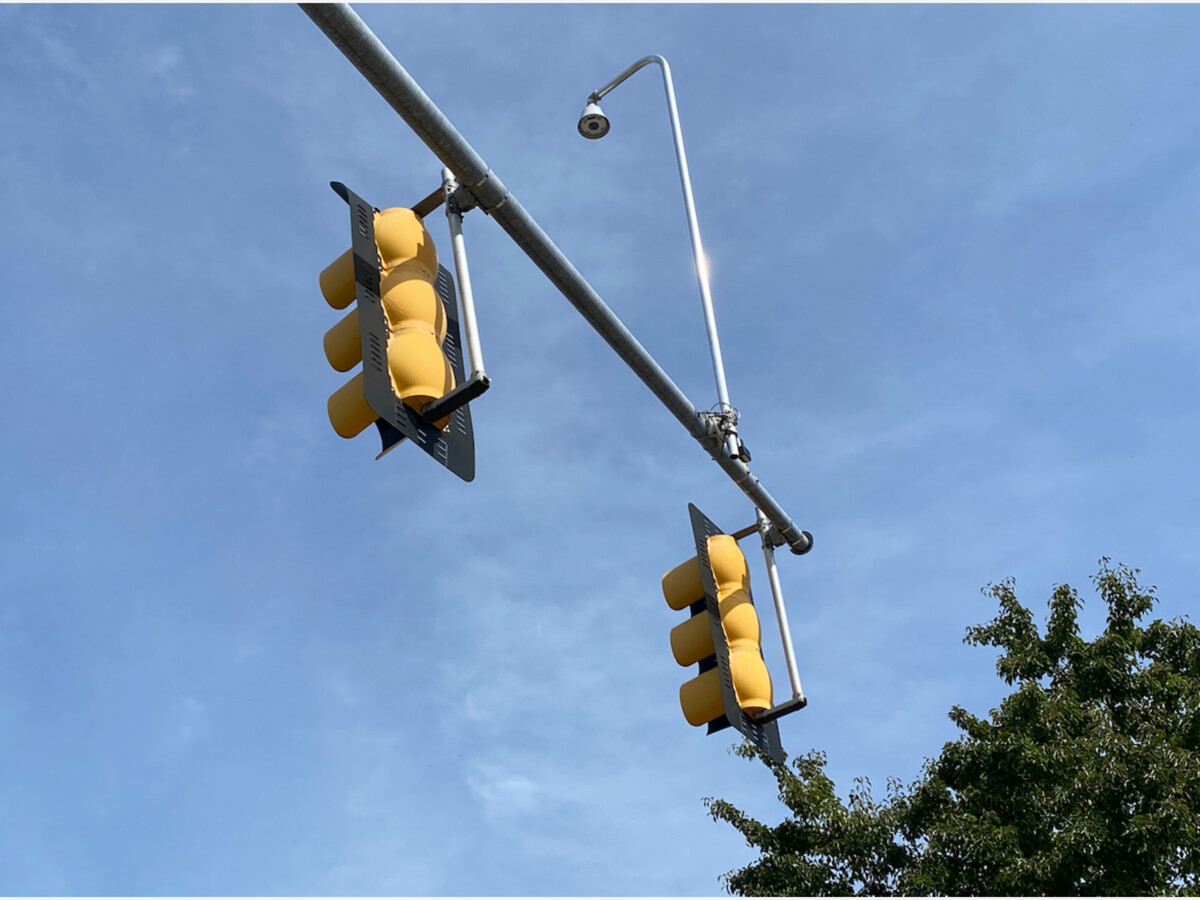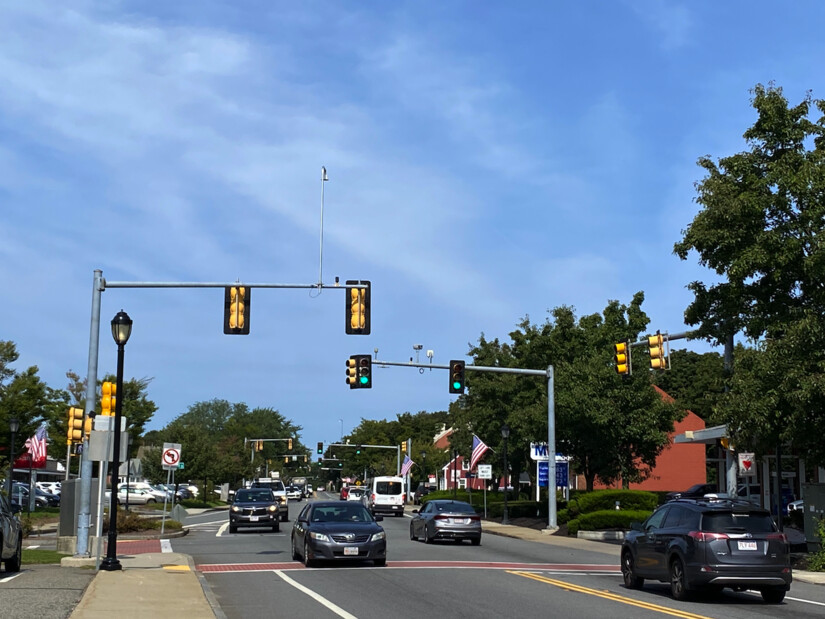Image


Area residents passing through the Town of Westwood on High Street have noticed a change of appearance around the town’s traffic lights in the last month. Many are asking questions. What are those small globes hanging at the end of thin rods, extending from the more familiar traffic light structures?
The new equipment are upgrades to Westwood’s traffic lights. They can be described as appearing in shape to be miniatures of the street lamps that line the town’s streets. The small globes hanging at the end of the thin rods are primarily used for enhanced communication, but they can also act as traffic cameras, explains Todd Korchin, the director of Westwood’s Department of Public Works (DPW).
According to Mr. Korchin, the new traffic equipment is the result of DPW’s successful application for funding through the Massachusetts Department of Transportation’s (MassDOT’s) Local Bottleneck Reduction Program.
The program is relatively new, launching in 2021. Its purpose is to provide funding to projects that improve traffic flow, remedy congestion bottlenecks, and improve safety on local roadways. Funded projects may address poor traffic signaling, outdated equipment, and lack of adequate vehicle detection, among other issues. Any town is eligible to apply. The state grants funding in a competitive application process. Implementation is the applicant’s responsibility.
Westwood’s DPW applied for the state funding about two years ago, says Mr. Korchin. The Local Bottleneck Reduction Program was an easy opportunity to fund applicable projects in town, he says. The application needed to specify “pinch-points” in the community where traffic merges and causes backups.
As local commuters can attest, a well-known bottleneck on Westwood roads has been the area of traffic flowing on Route 109/High Street, as it approaches Thurston Middle School and the Route 128/Interstate 95 onramp. For drivers from nearby towns of Medfield or Millis, passing through Westwood on Route 109/High Street is the only reasonable access to that interchange. This route by necessity regularly serves commuters from Westwood and surrounding towns.
 Photo by Westwood Minute/Darlene Wong Cancell. Traffic moves on High Street with the aid of new sensors mounted vertically atop traffic lights at Westwood's intersection of High and Hartford streets.
Photo by Westwood Minute/Darlene Wong Cancell. Traffic moves on High Street with the aid of new sensors mounted vertically atop traffic lights at Westwood's intersection of High and Hartford streets.Last year, one year after DPW's application, MassDOT approved Westwood for $500,000 in funding to address this congestion. The project is referred to by some town officials as the “adaptive signalization program,” or “light synchronization project.”
The $500,000 reimbursement by the state for Westwood’s expenditures represents the maximum amount that a municipality can receive in a single fiscal year. No additional funds are allowed for design. However, successful applicants are assigned to work with a MassDOT-led design consultant who can complete design work at no cost to the applicant. In some cases, a project may be allowed to proceed without this design work.
Mr. Korchin says the state acted as project manager and contracted out the work of mounting the new equipment. Mr. Korchin describes the new equipment as six signals, installed on High Street from Route 128 to Hartford Street, which are now able to communicate at a higher level and better monitor the flow of traffic to “optimize signalization.” For example, High Street traffic can flow without being stopped by a red light, as long as the new equipment senses no vehicles on side streets that need to turn onto High Street.
Like many improvements, there is at least one potential downside. One potential result of the traffic optimization may be that traffic applications like Waze will now divert additional traffic from other congested areas to High Street in Westwood. If Westwood's new traffic sensing equipment enables High Street to become a more free-moving route compared to other roadways, applications like Waze may direct even more vehicles to travel on High Street than they did previously.
On the positive side, “This is an upgrade to our existing infrastructure,” says Mr. Korchin. Additionally, he adds, the upgrade is achieved at no expense or cost to Westwood residents. “Having this technology available and having the town able to take advantage of it through a grant program is tremendous,” he said. “It’s more efficient for all the vehicles out there.”
Thanks to Todd Korchin for speaking with Westwood Minute.
I think it was better when folks thought they were speed monitoring cameras. Finally, cars were actually slowing down on High Street. The safest time of the day for pedestrians on High Street appears to be when there are traffic bottlenecks as cars have to slow down.